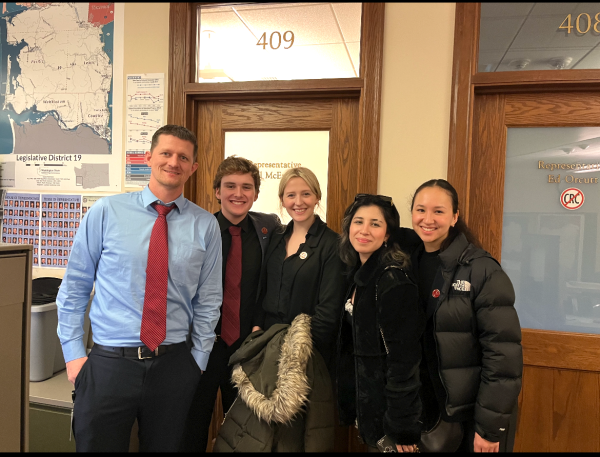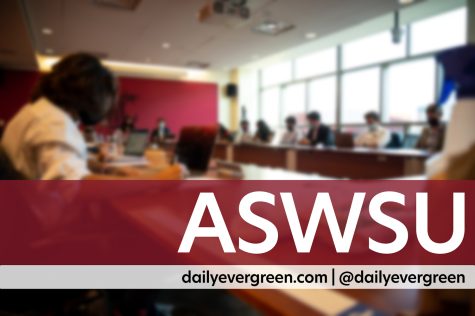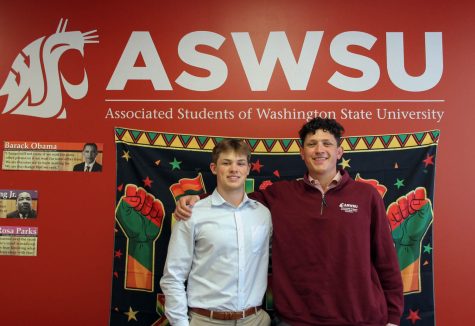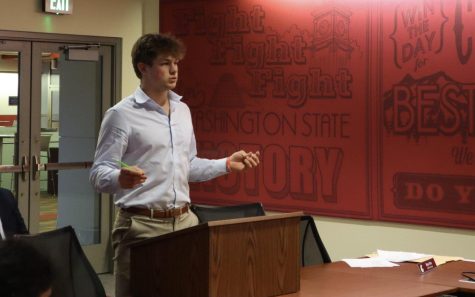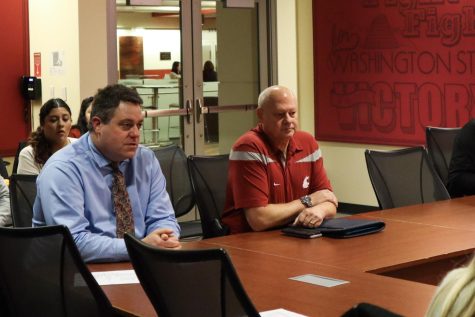Leaders to tackle communication issues
ASWSU to update site regularly, reduce amount of daily emails
Bonnie James | Daily Evergreen File
ASWSU Vice President Tyler Parchem, left, and ASWSU President Savannah Rogers want to reduce the amount of emails a student receives on a daily basis.
May 31, 2018
Many of the goals outlined in the 100-day plan created by ASWSU President Savannah Rogers and ASWSU Vice President Tyler Parchem deal with communication between the university and students.
One of these goals includes increasing the efficiency of emails from WSU departments, which comes as an effort to reduce the number of messages a student receives from WSU, a common complaint on the campaign trail and one related to by the leaders.
“During the school year I’m probably getting three to five emails a day,” Rogers said, “and that’s so frustrating because there’s actually really important information in those emails, but students get bombarded to the point where they just don’t care. They’ve thrown their hands up, and they’ve said ‘I’m tired of it, get rid of it.’ ”
Sometimes multiple groups will send out emails that convey the same message, resulting in clutter in student inboxes, Rogers said. One possible solution to the problem comes in the form of limiting the number of times a department can send out an email to students.
Rogers’s goal is to have groups condense the messages they attempt to convey over email into shorter packages to reduce the amount of mail a student deals with on a regular basis.
Another point Rogers and Parchem plan on addressing in their first 100 days comes in the form of updates from the five groups created in response to the student sit-in held at the French Administration building last August. Students demanded better representation and services for minority students at WSU.
The groups created include gender inclusivity, cultural competency training and courses in the Department of Critical Culture, Gender and Race Studies. Other areas covered are the retention and hiring of persons of color and a group focused on executive policy 15, which deals with reports of harassment at the university, Rogers said.
Parchem said the groups need to provide information on what they’ve done in the year since they were created.
“One of the frustrations is that it’s been a year and we haven’t heard anything from that,” he said.
Parchem also said students need to be informed on what progress has been made since the groups were formed in order to ensure students that their concerns were being heard.
“There hasn’t been a lot of information released,” he said. “That just leads students to think that nothing’s happening and that may not be the case.”
Information from the groups will likely come from ASWSU, but Parchem said the groups could be allowed to release updates directly if they choose to do so.
One way they may release this information, and another goal of their 100-day plan, is through updating the official ASWSU website. The pair said concerns over the website rose from the lack of updates made to the site in the past.
Parchem said keeping updates on a regular schedule is key in the usefulness of the website.
“Sticking with that timeline, I think that’s really the biggest thing,” he said.
Rogers said the executive branch may be able to provide daily updates, but groups such as the Senate and their committees may be on a more spaced out schedule.
Rogers said some of the information planned to appear on the site will include staff photos, updates from different committees and biographies of committee members, senators and other officials. The site may also host information on how students can get involved with the organization.
While this will require more work for the communication team within ASWSU, Rogers said the task will not require any extra funding from the group, as they have made it a responsibility for their team.
“It’s not just an expectation for the directors that Tyler and I have,” she said, “but it’s also been an expectation from when I served on the Senate that you put in the time to get your job done … you didn’t sign up for five hours a week or six hours a week, you signed up for the job.”











